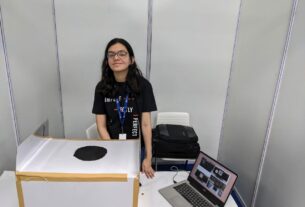Introduction:
Obstructive Sleep Apnea (OSA) is not merely a nocturnal inconvenience but is fast becoming a health burden in India, particularly among the working-age population. A recent comprehensive study by researchers at the All-India Institute of Medical Sciences (AIIMS) in New Delhi has brought to light the alarming prevalence of OSA. The findings reveal that a staggering 104 million working-age Indians are grappling with this sleep disorder, highlighting the urgency for heightened awareness and proactive measures.
Prevalence of OSA in India:
The AIIMS study underscores that OSA is not an isolated concern; it is a widespread issue affecting a significant portion of the Indian population. A startling 11% of Indian adults are affected by OSA, with a notable gender disparity – 13% in men compared to 5% in women. These statistics emphasize the pressing need for a proactive approach to understand, prevent, and manage this increasingly prevalent sleep disorder.
Side Effects and Comorbidities:
The repercussions of untreated OSA extend far beyond mere sleep disruption. Individuals with OSA face a heightened risk of developing serious health issues, including hypertension, cardiovascular diseases, diabetes, and obesity. The rising prevalence of OSA underscores the urgency to address associated side effects and comorbidities to prevent a looming health crisis.
Preliminary Symptoms for Self-Diagnosis:
Recognizing the preliminary symptoms of OSA is crucial for early intervention. Symptoms such as persistent fatigue, loud snoring, daytime sleepiness, abrupt awakenings with a choking or gasping sound, and frequent morning headaches should not be overlooked. Identifying these warning signs early on empowers individuals to take the initial step toward seeking professional help.
Seeking Professional Help:
For those experiencing two or more symptoms, prompt consultation with a sleep physician is crucial. The next step involves undergoing a sleep test, a process made more accessible through sleep labs or home sleep test kits. This proactive approach facilitates early diagnosis, setting the stage for timely intervention and improved outcomes.
Treatment and Management Options:
Fortunately, various treatment and management options exist for individuals diagnosed with OSA. Continuous Positive Airway Pressure (CPAP) therapy, lifestyle modifications, and oral appliances are among the array of interventions available. In specific cases where anatomical factors contribute to airway obstruction, surgical options may be considered. The key lies in a personalized approach that considers each patient’s unique needs and circumstances.
Seasonal Considerations:
As winter approaches, it is essential to consider the seasonal impact on individuals dealing with OSA and respiratory disorders. Cold and dry air can exacerbate symptoms, posing additional challenges for those with compromised respiratory functions. Awareness during the winter months becomes pivotal, prompting individuals to take necessary precautions and adhere to their treatment plans.
Conclusion:
Understanding and addressing sleep disorders, particularly the escalating prevalence of OSA, are vital for overall health and well-being. By recognizing the symptoms and understanding available interventions, individuals can take proactive steps toward better sleep and improved health outcomes. This awareness is particularly crucial during the challenging winter season, emphasizing the need for comprehensive strategies to mitigate the impact of OSA on public health in India.



